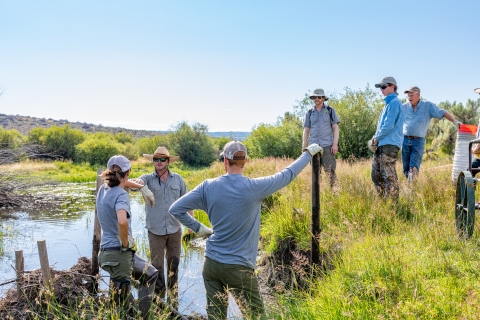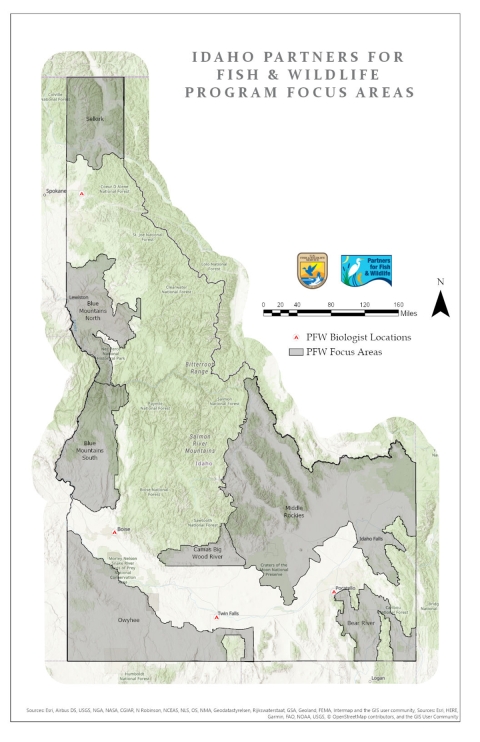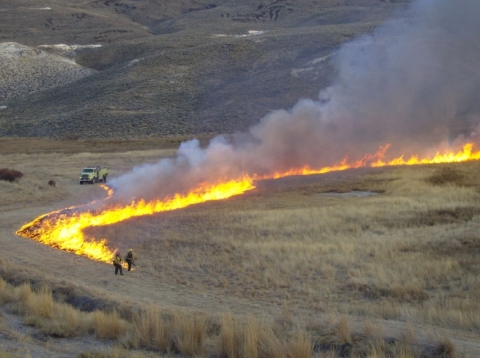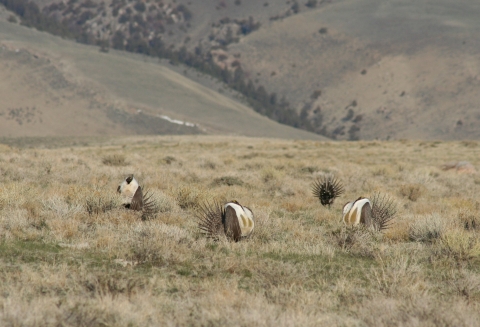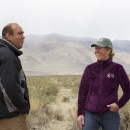Partners Program in Idaho
Summary
Our nation’s private landowners are critical to the success of the U.S. Fish and Wildlife Service’s mission to conserve, protect, and enhance fish, wildlife, plants and their habitats. The Service has many tools and programs for conservation of fish, wildlife, and plants on private lands. The goal of the U.S. Fish and Wildlife Service’s Partners for Fish and Wildlife Program is to work with private and Tribal landowners who want to voluntarily improve fish, wildlife, and plant habitat on their lands.
The program provides cost-share funding and technical expertise to landowners, and landowners can request assistance at any time of the year. The program’s focus is on improvement of wetland, riparian riparian
Definition of riparian habitat or riparian areas.
Learn more about riparian , sagebrush sagebrush
The western United States’ sagebrush country encompasses over 175 million acres of public and private lands. The sagebrush landscape provides many benefits to our rural economies and communities, and it serves as crucial habitat for a diversity of wildlife, including the iconic greater sage-grouse and over 350 other species.
Learn more about sagebrush /grasslands, wet-meadow, and aquatic habitats to benefit migratory birds and threatened, endangered and other sensitive or declining species.
Eligible Landowners
Individual private landowners, Native American Tribes, corporations, schools, counties, cities, and other groups.
Projects on federal and state lands are not eligible.
Selection Criteria
Projects are selected based on their benefits to wetland, riparian, sagebrush/grasslands, wet-meadow, and aquatic habitats for migratory birds, threatened or endangered species, and sensitive or declining species.
Project selection occurs at the local level based on identified priorities.
The intent of the program is to improve native fish, wildlife, and plant habitats; plantings and seedings should generally consist of native species.
Partners funds may not be used on habitat improvement projects being implemented for mitigation purposes under any federal or state regulatory program.
Program Application
Landowners can request assistance at any time during the year. There is no application period.
Service personnel will help the landowner develop the project proposal and application, including an agreement between the landowner and the Service, or will meet with the landowner to provide technical assistance.
Landowners interested in becoming a Partner simply contact the Partners Program Coordinators: State Coordinator – Jason Pyron 208-685-6958; Southern Idaho – Josh White: 208-378-5265; Eastern Idaho –Matt Bringhurst: 208-237-6975 ex 120; Northern Idaho – Brittany Morlin: 208-769-5111.
Program Cost-Share
Landowners receive reimbursement for the Service’s portion of the project cost after the work is completed.
A 50:50 cost-share ratio is targeted, but some flexibility is allowed.
The Partners Program can contribute up to $25,000 in cost-share funds per project.
Partnerships: Can Others Contribute?
The Partners Program can cost-share with anyone to help finance a habitat improvement project. Funding can come from landowners, other federal agencies, state and local agencies, soil and water conservation districts, and non-governmental agencies such as land trusts, Ducks Unlimited, Pheasants Forever, or other environmental/natural resource organizations.
Cost-share funding from others can be in the form of “in-kind” as well as cash.
Federal, state, and local governmental agencies or private organizations can act as intermediaries for the Service in arranging and carrying out habitat improvement projects by entering into Cooperative Agreements.
Partnership Opportunities
Summary
We are interested in developing strong partnerships with landowners to manage and conserve native fish, wildlife and plant species such as migratory birds and threatened, endangered, or other sensitive species. We often work with landowners across the Idaho landscape, including wetland, riparian, sagebrush, grasslands, forest and aquatic habitats.
Tools for Private Landowners, Non-Federal Landowners, States and Tribes
It is estimated that two-thirds of our nation's lands are privately owned. The U.S. Fish and Wildlife Service recognizes that the key to ensuring healthy fish, wildlife and plants and their habitats rests in the hands of private landowners. Idaho’s Conservation Planning Program provides opportunities for the Service to work with interested landowners to restore and maintain quality habitat. Through this Program, Service personnel use collaborative methods to provide technical and financial assistance needed to protect species and enhance the ecosystems upon which they depend. Participation in all programs is voluntary.
Conservation Planning Tools: Agreements
Conservation Agreements are tools for non-federal landowners wishing to work with the Service to conserve listed or at-risk species, consistent with existing land use practices and management. Participants in agreements commit to actions on their property that will reduce threats to species and enhance their conservation.
- Candidate Conservation Agreements (CCAs)
- Candidate Conservation Agreements with Assurances (CCAAs)
- Habitat Conservation Plans (HCPs)
- Safe Harbor Agreements (SHAs)
Landowner, Tribal and State Funding Opportunities
There are a variety of species and habitat conservation grants and funding opportunities available for non-federal landowners interested in implementing conservation measures on their property.
Private Stewardship Program Grants
This program provides assistance to landowners for managing their lands in ways that benefit native species and their habitats. A 10% non-federal cost share is required.
Tribal Wildlife Grants
Tribes are eligible to receive funds through this program for development and implementation of programs that benefit wildlife and habitat, including species that are not hunted or fished.
A cost share is not required, but is beneficial.
State Opportunities
Cooperative Endangered Species Conservation Fund (Section 6 Grants)- States are eligible to receive funds through this program (authorized under section 6 of the ESA) for a wide array of voluntary conservation projects for candidate, proposed, and listed species. These funds, in turn, may be awarded to private landowners and groups for conservation projects. A 25% non-federal cost share is required. Contact Idaho Department of Fish and Game Headquarters for application dates and materials
at 208-334-3700.
This program has four grant opportunities:
- Conservation Grants -Provides assistance to states to implement conservation projects for candidate, proposed and listed species.
- Habitat Conservation Planning Assistance -Provides assistance to states to support development of Habitat Conservation Plans (HCPs).
- Habitat Conservation Land Acquisition -Provides assistance to states to acquire land associated with approved Habitat Conservation Plans (HCPs) to secure protection of listed species.
- Recovery Land Acquisition -Provides assistance to states to acquire habitat for listed species.

